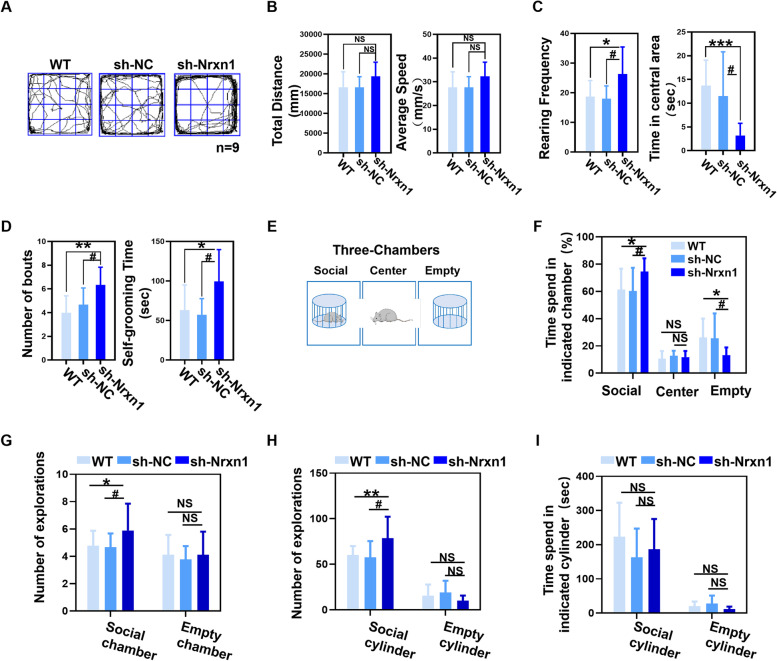Fig. 2.
Sh-NRXN1 rats were manifested aberrant locomotive activity and social behaviors. A Representative traces from WT, Sh-Nc, and Sh-NRXN1 rats in open-field test. Wild type (WT = 9), Sh-Nc (n = 9), Sh-NRXN1 (n = 9). B Total distance travelled F (2, 24) = 2.46, P > 0.05 and average speed F (2, 24) = 1.91, P > 0.05 in open-field test. C Rearing frequency F (2, 24) = 4.42, P = 0.02 and time in central area F (2, 24) = 8.23, P = 0.002 obtained from open-field test. D Number of bouts F (2, 24) = 4.58, P = 0.02, and self-grooming time F (2, 24) = 4.61, P = 0.02, in open-field test. E Schematic representation of the three-chamber social interest task. Wild type (WT = 9), Sh-Nc (n = 9), Sh-NRXN1 (n = 9). F Percentage of time spent in the chamber containing the social object F (2, 24) = 3.5, P = 0.048, the center chamber F (2, 24) = 1.058, P > 0.05, or the empty chamber F (2, 24) = 3.49, P = 0.048. G The number of explorations between social chamber F (2, 24) = 4.16, P = 0.028, and empty chamber F (2, 24) = 0.275, P = 0.76. H The number of explorations between social cylinder F (2, 24) = 5.2, P = 0.013, and empty cylinder F (2, 24) = 1.49, P = 0.245. I Time spent on social cylinder F (2, 24) = 1.01, P = 0.36, and empty cylinder, respectively. These data were presented as mean ± SD of three independent experiments. NS > 0.05, *P < 0.05, **P < 0.01, and ***P < 0.001 versus WT group. #P < 0.05, ##P < 0.01, ###P < 0.001 versus Sh-Nc group

